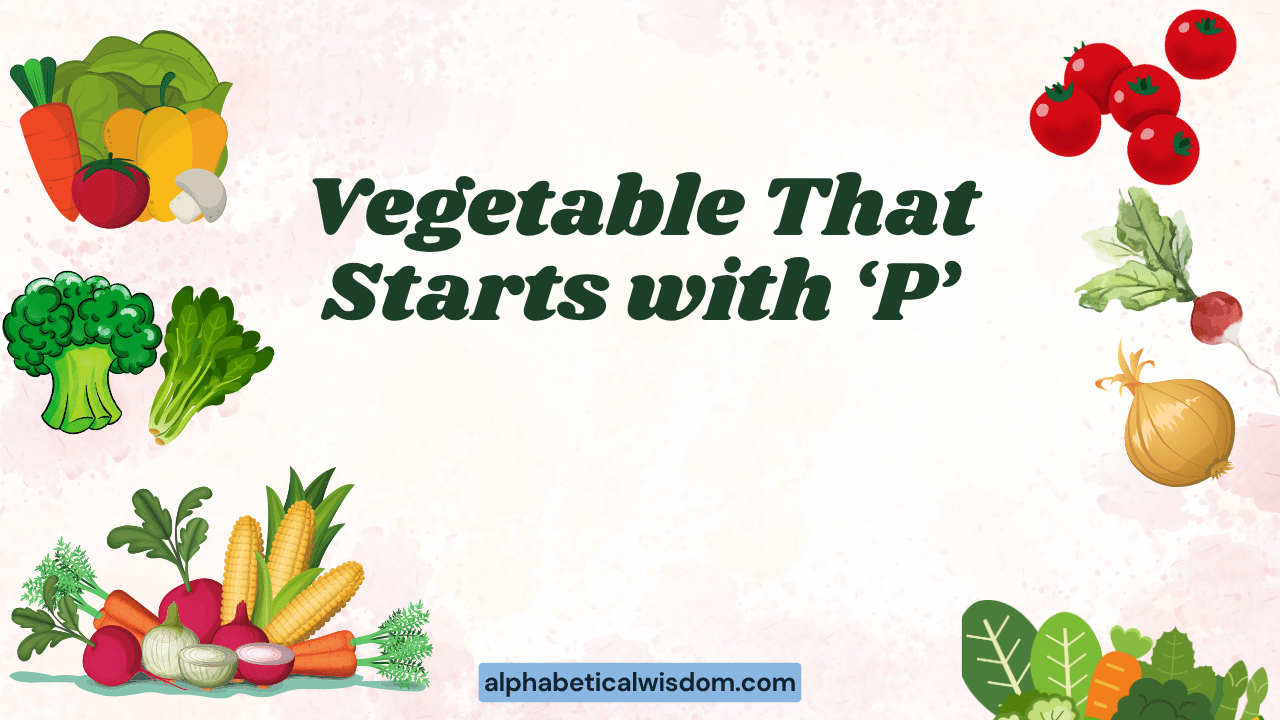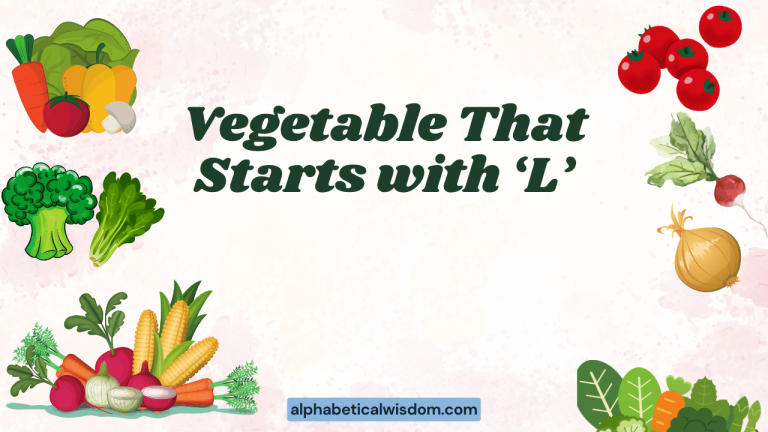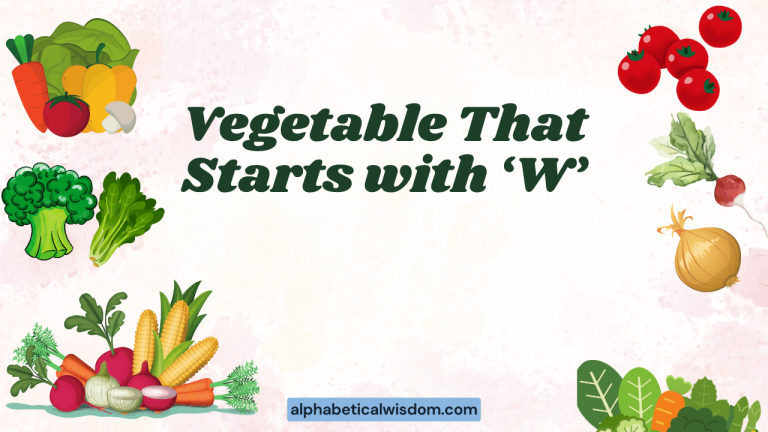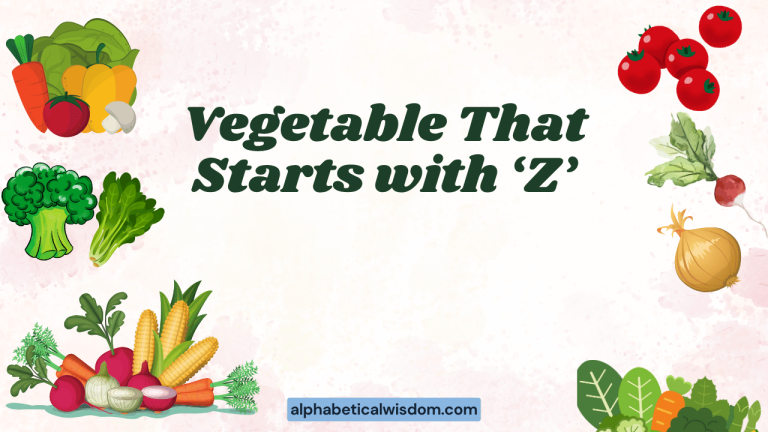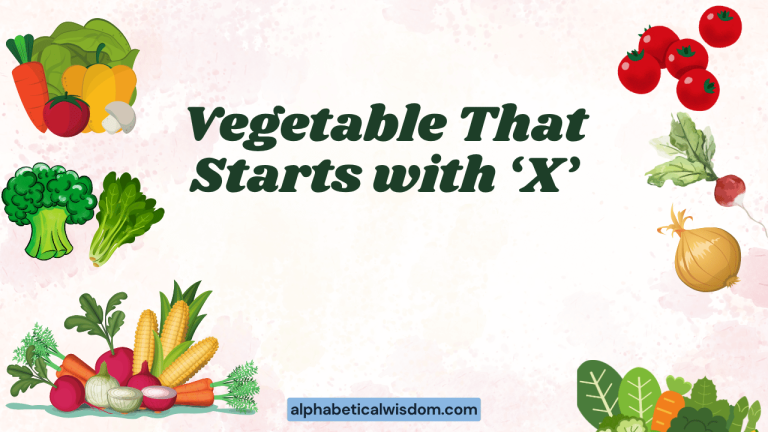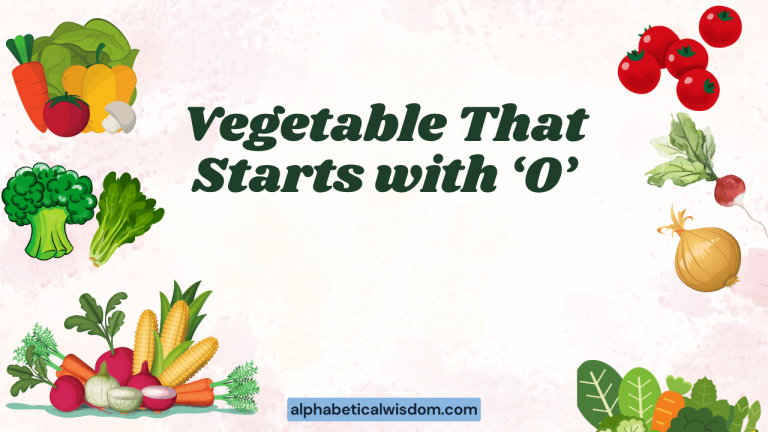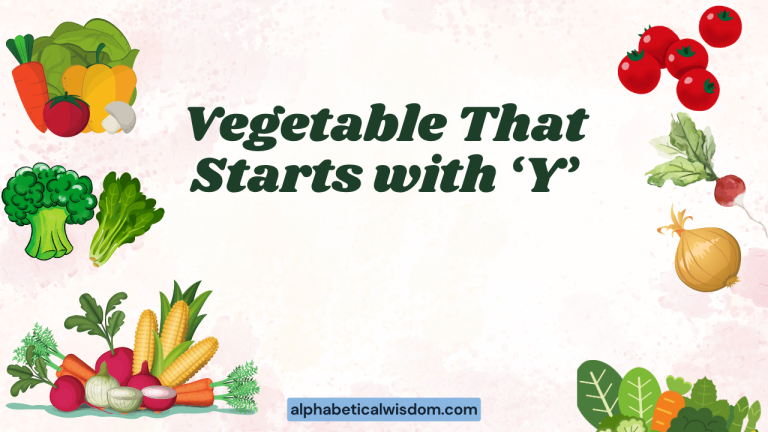Vegetables Starting with P: Grammar, Usage, and Examples
Understanding how to use nouns, especially when referring to specific categories like vegetables, is fundamental to English grammar. This article focuses on vegetables that start with the letter “P,” exploring their grammatical properties, proper usage, and common errors.
Whether you are an ESL learner, a student studying English, or simply someone looking to improve their vocabulary, this guide will provide comprehensive insights and practical exercises to enhance your understanding and fluency.
This detailed exploration will cover everything from the basic definition of these vegetables to advanced topics like idiomatic expressions and cultural contexts. By the end of this article, you will have a solid grasp of how to use these vegetable names correctly and confidently in your everyday communication.
Table of Contents
- Introduction
- Definition of Vegetables Starting with ‘P’
- Structural Breakdown
- Types and Categories
- Examples
- Usage Rules
- Common Mistakes
- Practice Exercises
- Advanced Topics
- FAQ
- Conclusion
Definition of Vegetables Starting with ‘P’
A vegetable is generally defined as an edible plant or part of a plant that is used for food. In culinary terms, vegetables are usually savory and are often eaten as part of a main course or side dish.
When discussing vegetables that start with the letter “P,” we are specifically referring to plant-based foods whose names begin with this letter.
These vegetables, like all nouns, function as subjects, objects, or complements in sentences. They can be singular or plural, countable or uncountable (depending on the specific vegetable and context), and can be modified by adjectives and used with articles (a, an, the).
The classification of a plant as a vegetable or fruit can sometimes be confusing. Botanically, a fruit is the mature ovary of a flowering plant and contains seeds.
However, in culinary practice, the distinction is often based on taste and usage. For example, tomatoes are botanically fruits but are commonly used as vegetables in cooking.
Structural Breakdown
The names of vegetables starting with “P” follow standard English noun structures. They can be used as:
- Subjects: Peas are a good source of vitamins.
- Objects: I bought potatoes at the market.
- Complements: My favorite vegetable is parsnip.
- Adjectives (attributive nouns): Potato salad is a popular dish.
The plural forms are typically created by adding “-s” or “-es” to the singular form. However, some may have irregular plural forms or be treated as uncountable nouns depending on the context.
For example, “peas” is often used in the plural, while “pumpkin” can be singular or plural.
Articles (a, an, the) are used based on whether the vegetable is being referred to generically or specifically. For example, “I like potatoes” (generic) versus “The potatoes I bought were delicious” (specific).
Types and Categories
Potatoes
Potatoes are starchy tubers from the nightshade family. They are one of the world’s most widely consumed staple foods and come in various types, including russet, Yukon gold, red potatoes, and sweet potatoes (though sweet potatoes are botanically different).
Potatoes are often used in main courses and side dishes. They can be boiled, baked, fried, mashed, or roasted.
They are a good source of carbohydrates and vitamins.
Peas
Peas are small, spherical seeds that grow in pods. They are a legume and are typically green.
Common types include garden peas, snow peas, and sugar snap peas.
Peas can be eaten fresh, frozen, or canned. They are often used in soups, stews, and salads.
They are a good source of protein and fiber.
Peppers
Peppers are fruits from the nightshade family, but they are commonly used as vegetables in cooking. They come in a wide range of shapes, sizes, colors, and levels of spiciness.
Common types include bell peppers, chili peppers, jalapeños, and paprika.
Peppers can be eaten raw, cooked, or dried. They are often used in salads, stir-fries, and sauces.
They are a good source of vitamins and antioxidants.
Parsnips
Parsnips are root vegetables that are related to carrots and parsley. They have a sweet, slightly spicy flavor and are typically cream-colored.
Parsnips can be boiled, roasted, or mashed. They are often used in soups, stews, and side dishes.
They are a good source of fiber and vitamins.
Pumpkins
Pumpkins are a type of squash that are typically orange. They are often associated with Halloween and Thanksgiving in the United States.
Pumpkins can be used in pies, soups, and stews. The seeds can also be roasted and eaten.
Pumpkins are a good source of vitamins and fiber.
Examples
The following tables provide examples of how vegetables starting with “P” can be used in sentences. The examples are categorized by the specific vegetable to illustrate different contexts and usages.
Potatoes Examples
This table showcases various examples of using “potatoes” in sentences, illustrating its function as a subject, object, and complement.
| Sentence | Grammatical Role |
|---|---|
| Potatoes are a staple food in many countries. | Subject |
| I bought potatoes at the farmer’s market. | Object |
| My favorite side dish is mashed potatoes. | Complement |
| She peeled the potatoes for dinner. | Object |
| These potatoes are perfect for roasting. | Subject |
| We grew potatoes in our garden this year. | Object |
| Potatoes provide a good source of carbohydrates. | Subject |
| He prefers his potatoes baked with cheese. | Object |
| The farmer harvested the potatoes in the fall. | Object |
| Are those potatoes organic? | Subject |
| I need to buy more potatoes for the party. | Object |
| The chef used potatoes to thicken the soup. | Object |
| Potatoes are often served with meat dishes. | Subject |
| They fried the potatoes until they were golden brown. | Object |
| These potatoes have a very creamy texture. | Subject |
| She added some herbs to the mashed potatoes. | Object |
| Potatoes can be used in many different recipes. | Subject |
| He seasoned the potatoes with salt and pepper. | Object |
| The children love eating french fried potatoes. | Object |
| These potatoes are from Idaho. | Subject |
| I planted potatoes in the spring. | Object |
| The potatoes in the cellar were starting to sprout. | Subject |
| We ate baked potatoes for dinner last night. | Object |
| The potatoes were on sale at the grocery store. | Subject |
| She chopped the potatoes into small pieces. | Object |
Peas Examples
This table presents examples of using “peas” in sentences, demonstrating its grammatical function and different contexts.
| Sentence | Grammatical Role |
|---|---|
| Peas are a good source of vitamins. | Subject |
| I added peas to the soup. | Object |
| One of my favorite vegetables is peas. | Complement |
| She picked fresh peas from the garden. | Object |
| Peas grow well in cool climates. | Subject |
| We served peas as a side dish. | Object |
| Peas are often used in stir-fries. | Subject |
| He enjoys eating peas with his steak. | Object |
| The farmer harvested the peas early this year. | Object |
| Are those peas organic? | Subject |
| I need to buy more peas for the casserole. | Object |
| The chef added peas to the pasta dish. | Object |
| Peas are often served with carrots. | Subject |
| They froze the peas to preserve them. | Object |
| These peas have a very sweet flavor. | Subject |
| She added some butter to the peas. | Object |
| Peas can be used in many different cuisines. | Subject |
| He seasoned the peas with mint. | Object |
| The children love eating sugar snap peas. | Object |
| These peas are from a local farm. | Subject |
| I planted peas in the spring. | Object |
| The peas in the pot were bubbling gently. | Subject |
| We ate peas and carrots with our roast chicken. | Object |
| The peas were bright green and fresh. | Subject |
| She shelled the peas before cooking them. | Object |
Peppers Examples
This table illustrates the usage of “peppers” in sentences, showcasing its versatility in different contexts.
| Sentence | Grammatical Role |
|---|---|
| Peppers are a good source of Vitamin C. | Subject |
| I bought red and green peppers. | Object |
| My favorite pizza topping is peppers. | Complement |
| She sliced the peppers for the salad. | Object |
| Peppers come in many different colors. | Subject |
| We grilled peppers at the barbecue. | Object |
| Peppers are often used in Mexican cuisine. | Subject |
| He added peppers to the stir-fry. | Object |
| The farmer grew a variety of peppers. | Object |
| Are those peppers spicy? | Subject |
| I need to buy more peppers for the fajitas. | Object |
| The chef roasted the peppers until they were tender. | Object |
| Peppers are often served with onions. | Subject |
| They pickled the peppers to preserve them. | Object |
| These peppers have a very mild flavor. | Subject |
| She added some hot sauce to the peppers. | Object |
| Peppers can be used in many different dishes. | Subject |
| He seasoned the peppers with garlic. | Object |
| The children love eating bell peppers with dip. | Object |
| These peppers are from California. | Subject |
| I grew peppers in my garden this summer. | Object |
| The peppers on the plant were turning red. | Subject |
| We stuffed the peppers with rice and meat. | Object |
| The peppers were crunchy and flavorful. | Subject |
| She diced the peppers for the salsa. | Object |
Parsnips Examples
This table provides examples of using “parsnips” in sentences, demonstrating its grammatical roles and contexts.
| Sentence | Grammatical Role |
|---|---|
| Parsnips are a root vegetable. | Subject |
| I roasted parsnips with carrots. | Object |
| My favorite winter vegetable is parsnips. | Complement |
| She peeled the parsnips before cooking them. | Object |
| Parsnips have a sweet flavor. | Subject |
| We added parsnips to the stew. | Object |
| Parsnips are often used in soups. | Subject |
| He enjoys eating parsnips mashed with potatoes. | Object |
| The farmer harvested the parsnips in late fall. | Object |
| Are those parsnips organic? | Subject |
| I need to buy more parsnips for the soup. | Object |
| The chef pureed the parsnips for the sauce. | Object |
| Parsnips are often served with roast beef. | Subject |
| They baked the parsnips with herbs. | Object |
| These parsnips have a very smooth texture. | Subject |
| She added some maple syrup to the parsnips. | Object |
| Parsnips can be used in many different recipes. | Subject |
| He seasoned the parsnips with nutmeg. | Object |
| The children love eating roasted parsnips with honey. | Object |
| These parsnips are from a local farm. | Subject |
| I bought some parsnips at the market. | Object |
| The parsnips in the drawer were still fresh. | Subject |
| We made parsnips fries in the air fryer. | Object |
| The parsnips were sweet and earthy. | Subject |
| She grated the parsnips for the fritters. | Object |
Pumpkins Examples
This table demonstrates how “pumpkins” can be used in sentences, showcasing their diverse roles and contexts.
| Sentence | Grammatical Role |
|---|---|
| Pumpkins are often associated with Halloween. | Subject |
| I carved pumpkins with my family. | Object |
| My favorite pie is pumpkin pie. | Complement |
| She baked a loaf of pumpkin bread. | Object |
| Pumpkins grow well in the fall. | Subject |
| We used pumpkins to decorate our porch. | Object |
| Pumpkins are often used in pies and soups. | Subject |
| He enjoys eating pumpkin seeds. | Object |
| The farmer harvested the pumpkins in October. | Object |
| Are those pumpkins for sale? | Subject |
| I need to buy more pumpkins for the festival. | Object |
| The chef used pumpkin puree in the risotto. | Object |
| Pumpkins are often served during Thanksgiving. | Subject |
| They roasted the pumpkin seeds with spices. | Object |
| These pumpkins have a very bright orange color. | Subject |
| She added some cinnamon to the pumpkin pie. | Object |
| Pumpkins can be used in many different desserts. | Subject |
| He seasoned the pumpkin soup with ginger. | Object |
| The children love carving pumpkins with funny faces. | Object |
| These pumpkins are from a local farm stand. | Subject |
| I grew some pumpkins in my garden this year. | Object |
| The pumpkins on the vine were enormous. | Subject |
| We made pumpkin muffins for breakfast. | Object |
| The pumpkin was heavy and round. | Subject |
| She scooped out the seeds from the pumpkin. | Object |
Usage Rules
When using vegetable names in sentences, it is essential to follow standard rules of English grammar. Here are some key rules:
- Singular vs. Plural: Most vegetable names form their plural by adding “-s” (e.g., potato → potatoes). However, some may have irregular plural forms or be treated as uncountable depending on the context. “Peas,” for example, is commonly used in the plural form.
- Countable vs. Uncountable: Some vegetables can be treated as either countable or uncountable, depending on the context. For instance, “pumpkin” is usually countable, while “peas” can sometimes be treated as uncountable when referring to a general mass.
- Articles: Use “a” or “an” when referring to a single, non-specific vegetable (e.g., “I ate a potato“). Use “the” when referring to a specific vegetable or group of vegetables (e.g., “The potatoes I bought were organic”). Use no article when referring to vegetables in general (e.g., “Potatoes are a good source of carbohydrates”).
- Subject-Verb Agreement: Ensure that the verb agrees with the subject in number. For example, “Peas are a good source of vitamins” (plural subject, plural verb) versus “The potato is baking in the oven” (singular subject, singular verb).
- Adjectives: Use adjectives to describe the vegetables (e.g., “red peppers,” “sweet parsnips“). The adjective usually precedes the noun.
Understanding these rules will help you use vegetable names correctly and effectively in your writing and speech.
Common Mistakes
Here are some common mistakes that learners make when using vegetable names and how to correct them:
| Incorrect | Correct | Explanation |
|---|---|---|
| I like eat potato. | I like to eat potatoes. | Missing “to” before the infinitive and plural form of “potato.” |
| The peas is delicious. | The peas are delicious. | “Peas” is generally plural, so it requires a plural verb. |
| I buy a pumpkins. | I bought a pumpkin. | “Pumpkins” is countable, so you should use the singular form with “a.” |
| She cooked parsnip. | She cooked parsnips. | “Parsnip” is generally used in the plural when referring to multiple pieces. |
| Peppers is healthy. | Peppers are healthy. | “Peppers” is plural, requiring a plural verb. |
| I want a potatoes. | I want a potato. | Use the singular form of ‘potato’ with the article ‘a’. |
| The pea is green. | The peas are green. | ‘Peas’ is typically used in its plural form. |
| I like a pumpkin pie. | I like pumpkin pie. | No article is needed when referring to pumpkin pie in general. |
| She peeled the parsnip. | She peeled the parsnips. | ‘Parsnips’ is usually plural when referring to them as a dish ingredient. |
| He eat pepper. | He eats peppers. | Use the plural form ‘peppers’ and ensure subject-verb agreement. |
Practice Exercises
These exercises will help you practice using vegetables starting with “P” correctly. Complete each exercise and check your answers.
Exercise 1: Fill in the Blanks
Fill in the blanks with the correct form of the vegetable name.
| Question | Answer |
|---|---|
| I love to eat mashed __________. | potatoes |
| __________ are a good source of fiber. | Peas |
| She added __________ to the salad. | peppers |
| Roasted __________ are delicious. | parsnips |
| We carved __________ for Halloween. | pumpkins |
| I bought a bag of ___________ at the store. | potatoes |
| __________ are often eaten as a side dish. | Peas |
| The chef used colorful __________ in the stir-fry. | peppers |
| __________ have a sweet, nutty flavor. | Parsnips |
| __________ are used to make pies and breads. | Pumpkins |
Exercise 2: Sentence Correction
Correct the following sentences where the vegetable name is used incorrectly.
| Incorrect Sentence | Correct Sentence |
|---|---|
| The pea is my favorite vegetable. | Peas are my favorite vegetable. |
| I want a potatoes for dinner. | I want a potato for dinner. |
| She cooked parsnip with the meat. | She cooked parsnips with the meat. |
| We grew pumpkin in our garden. | We grew pumpkins in our garden. |
| Pepper is very spicy. | Peppers are very spicy. |
| I like eat potato chips. | I like to eat potato chips. |
| The peas is on the plate. | The peas are on the plate. |
| She bought a pumpkins at the market. | She bought a pumpkin at the market. |
| Parsnip is good for you. | Parsnips are good for you. |
| I added a pepper to the soup. | I added peppers to the soup. |
Exercise 3: Multiple Choice
Choose the correct sentence from the options provided.
| Question | Options | Answer |
|---|---|---|
| Which sentence is correct? | (a) I like potato. (b) I like potatoes. (c) I like a potato. | (b) I like potatoes. |
| Which sentence is correct? | (a) The peas is green. (b) The peas are green. (c) The pea are green. | (b) The peas are green. |
| Which sentence is correct? | (a) She bought a pumpkins. (b) She bought a pumpkin. (c) She bought pumpkin. | (b) She bought a pumpkin. |
| Which sentence is correct? | (a) He cooked parsnip. (b) He cooked parsnips. (c) He cook parsnip. | (b) He cooked parsnips. |
| Which sentence is correct? | (a) Peppers is healthy. (b) Pepper are healthy. (c) Peppers are healthy. | (c) Peppers are healthy. |
| Which sentence is correct? | (a) I eat potato every day. (b) I eat a potato every day. (c) I eat potatoes every day. | (c) I eat potatoes every day. |
| Which sentence is correct? | (a) The pea are delicious. (b) The peas is delicious. (c) The peas are delicious. | (c) The peas are delicious. |
| Which sentence is correct? | (a) She loves a pumpkin pie. (b) She loves pumpkin pie. (c) She love pumpkin pie. | (b) She loves pumpkin pie. |
| Which sentence is correct? | (a) We ate parsnip for dinner. (b) We ate parsnips for dinner. (c) We ate a parsnip for dinner. | (b) We ate parsnips for dinner. |
| Which sentence is correct? | (a) He grow pepper in his garden. (b) He grows pepper in his garden. (c) He grows peppers in his garden. | (c) He grows peppers in his garden. |
Advanced Topics
For advanced learners, it’s helpful to understand more nuanced aspects of using vegetable names in English. This includes idiomatic expressions, cultural contexts, and regional variations.
- Idiomatic Expressions: Some vegetables are used in idiomatic expressions. For example, the phrase “small potatoes” means something insignificant or trivial. Another example is “as alike as two peas in a pod,” which means that two people or things are very similar.
- Cultural Contexts: The significance and usage of certain vegetables can vary across cultures. For instance, pumpkins are strongly associated with Halloween and Thanksgiving in the United States, while in other cultures, they may be more commonly used in savory dishes.
- Regional Variations: The names and types of vegetables can vary by region. Different varieties of potatoes, peppers, and other vegetables may be more common in certain areas.
Exploring these advanced topics can enrich your understanding and usage of vegetable names in English, allowing for more sophisticated and culturally aware communication.
FAQ
Here are some frequently asked questions about using vegetable names in English:
- Q: How do I know whether to use the singular or plural form of a vegetable name?
A: Generally, use the plural form when referring to multiple items or a general category. Use the singular form when referring to a single item. For example, “I bought potatoes” (plural) versus “I bought a potato” (singular). - Q: When should I use “a,” “an,” or “the” before a vegetable name?
A: Use “a” or “an” when referring to a single, non-specific vegetable (e.g., “I ate a potato“). Use “the” when referring to a specific vegetable or group of vegetables (e.g., “The potatoes I bought were organic”). Use no article when referring to vegetables in general (e.g., “Potatoes are a good source of carbohydrates”). - Q: Are there any irregular plural forms for vegetable names?
A: Most vegetable names form their plural by adding “-s” or “-es.” However, some may be treated as uncountable or have less common plural forms depending on the context. - Q: How do I use vegetable names as adjectives?
A: You can use vegetable names as attributive nouns (nouns acting as adjectives) to describe other nouns. For example, “potato salad” and ”pumpkin pie.”
- Q: Why are some vegetables like peppers botanically fruits?
A: In botany, a fruit is the mature ovary of a flowering plant containing seeds. However, in culinary terms, the distinction between fruits and vegetables is often based on taste and usage. Therefore, peppers are often used as vegetables despite being botanically fruits.
Conclusion
Mastering the use of vegetable names starting with the letter “P” involves understanding their grammatical properties, usage rules, and contextual variations. This article has provided a comprehensive guide, covering everything from basic definitions to advanced topics.
By reviewing the examples, usage rules, common mistakes, and practice exercises, you can enhance your confidence and accuracy in using these nouns in English. Whether you are a student, an ESL learner, or simply someone interested in improving your language skills, a solid understanding of these concepts will undoubtedly contribute to your overall fluency and communicative competence.
